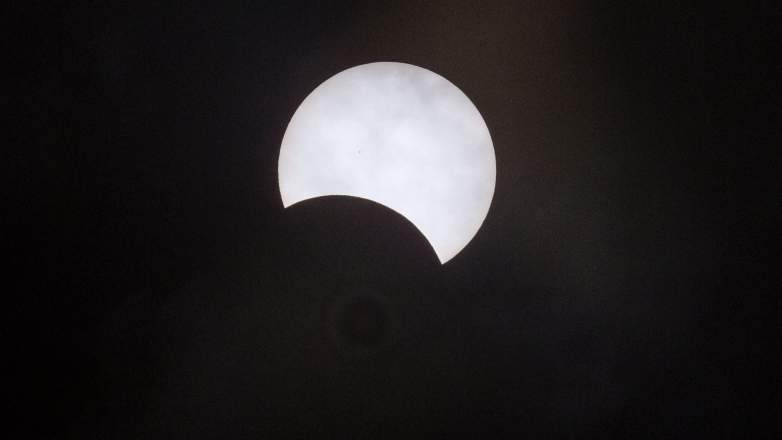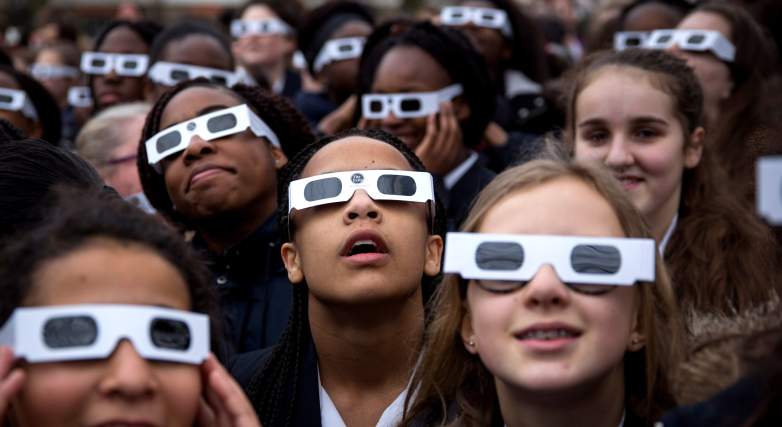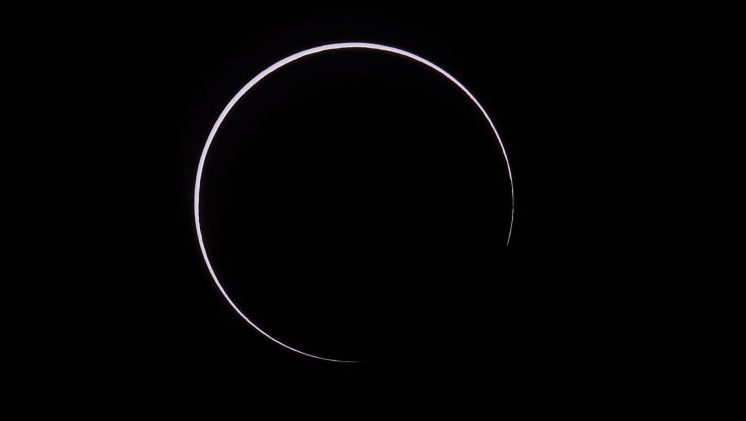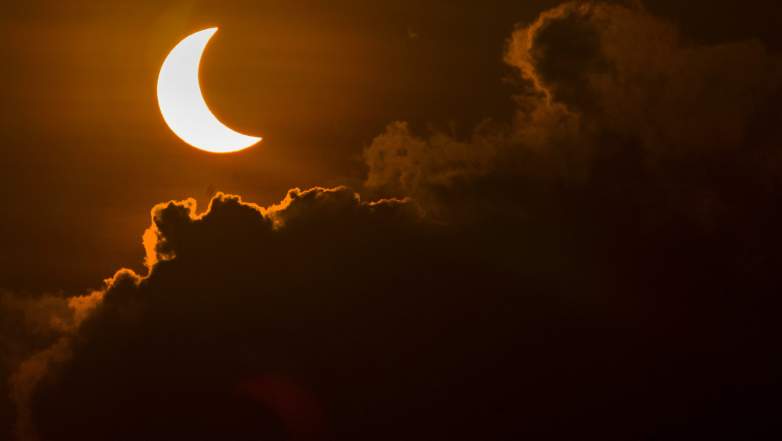
Getty A total solar eclipse is pictured from the city of Ternate, in Indonesia's Maluku Islands, on March 9, 2016.
The solar eclipse will arrive on August 21, 2017. However, not everyone can stay home or indoors. Some people have to get places. That has a lot of people wondering: Is it safe to drive during a solar eclipse?
There are dangers associated with it. However, here are some tips that will make it safer. According to The Verge, the last time a solar “eclipse crossed the US coast to coast, there were only 6.2 million registered motor vehicles in the entire country.” In 2015? “there were 263.6 million registered vehicles in the US in 2015, and probably a few million more today,” reports Verge.
That means a lot more potential for problems, even without an eclipse distracting people.
Don’t Let the Eclipse Distract You & Realize It Might Be Distracting Others

Getty
Really, one of the most dangerous things about driving during a solar eclipse is that you might be tempted to look at the solar eclipse instead of the road. That’s bad for several reasons. Reason 1: If you look at the eclipse without proper solar eclipse glasses, you could seriously damage your eyesight, according to NASA. Reason 2: You’re not watching the road. You can’t drive with the solar eclipse glasses on, and you can’t look at the solar eclipse without the glasses. See the problem?
“Do not attempt to watch the solar eclipse while driving! The better option is to find a safe place to park, and then observe the eclipse. The peak darkness phase will last just 2-3 minutes,” Jalopnik reports.
The site suggests that you should reduce your speed, turn on your headlights, and keep a lot of space between your car and other vehicles in case other people are looking at the eclipse.
Don’t Drive With Solar Eclipse Glasses On

Getty
This tip comes from the U.S. Department of Transportation, which says this would be very dangerous because you would be driving blind for all practical purposes.
Turn Your Headlights On

Getty
During the time of the eclipse, you should turn your headlights on for greater safety, according to USA Today.
How dark will it get? According to Weather.gov, “During a total eclipse, the sun’s corona is about as bright as a good full moon. Additionally, the edge of the moon’s shadow is, at most, only 35 miles away and considerable light will still come in from nearby areas not in total eclipse. Generally speaking, it will be as dark during a total eclipse as it is about a half hour after sunset, or as dark as mid-twilight.”
This cool online graphic allows you to figure out what will happen in your location during the solar eclipse.
Don’t Pull Over to the Side of the Highway

GettyA solar eclipse is pictured from Banda Aceh on March 9, 2016.
Find a safer place and way to watch the eclipse if you are so determined.
Beware of Bad Traffic & Pedestrians

Getty
AAA recommends, “Prepare for extra congestion on the roads during the eclipse period, but also in the days before and after the eclipse as many travelers head to the totality zone.”
According to Fox 5, “Nearly 20 million people are expected to be traveling to the ‘path of totality.'”
Watch out for people wandering around. “Watch out for pedestrians along smaller roads. People may be randomly parking and walking alongside the roadside in the hours around the eclipse to get the best view,” reports AJC.com.
Put Down Your Sun Visor

Malaysian school children wearing glasses with special filters watch the partial solar esclipse at the National Planetarium in Kuala Lumpur on March 9, 2016. (Getty)
In a list of tips it released, AAA advises, “Put the sun visor down to block your view of the sun.”